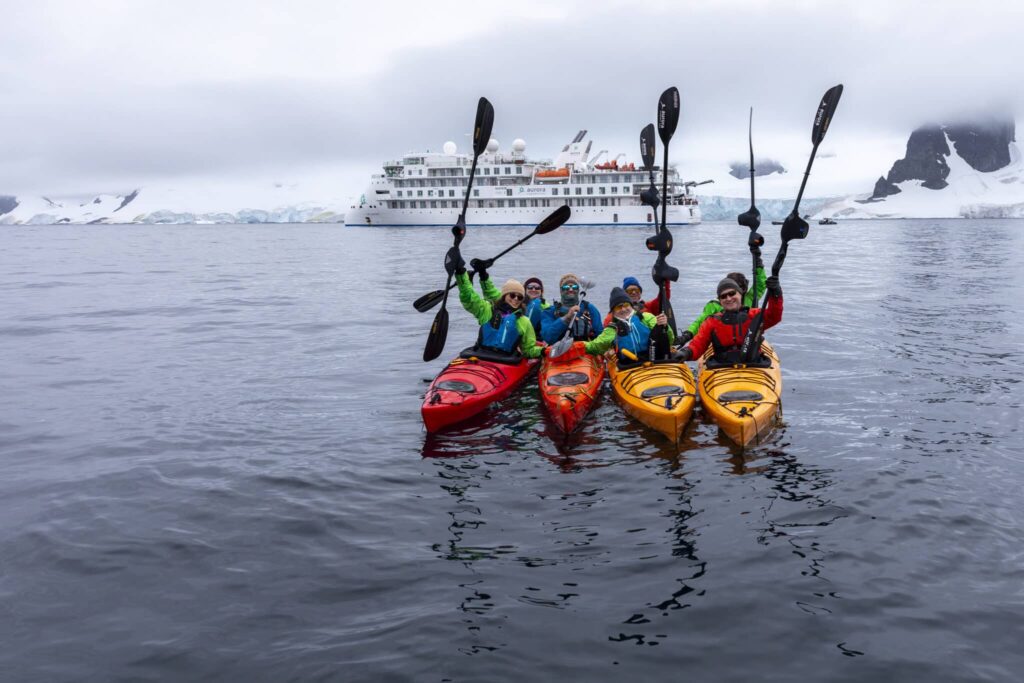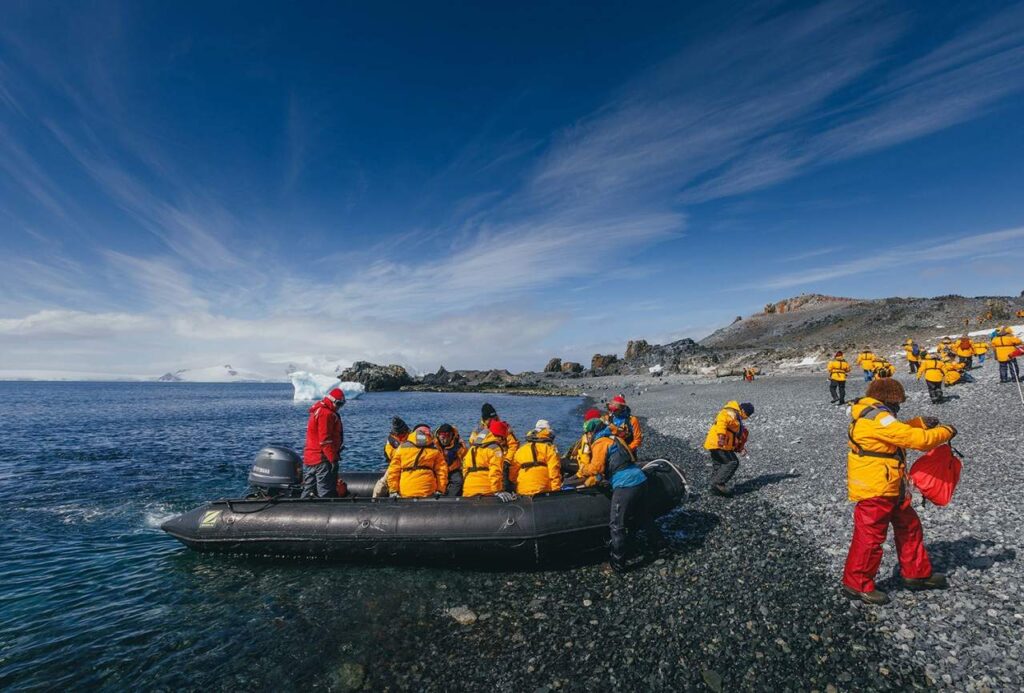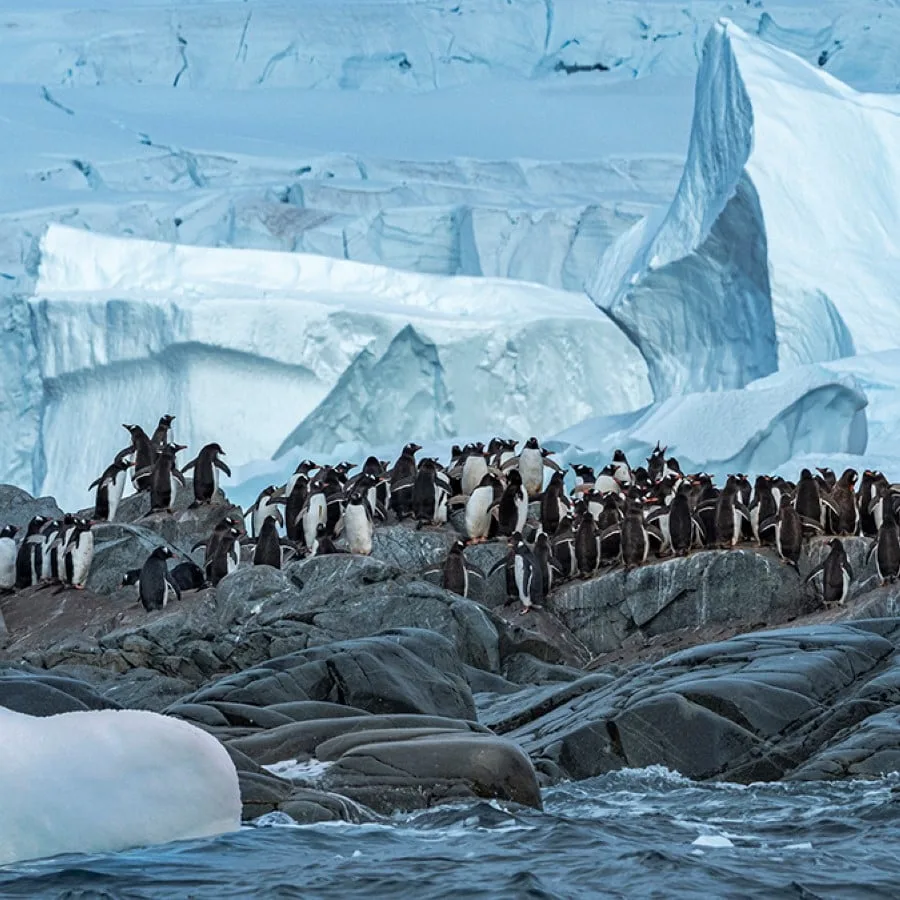Overview
Transfer + Flight Ushuaia/Santiago
With featured guests Ian Dawson and Sue Flood, British Photo Ambassadors.
Curiosity, surpassing oneself, being open to the world. Humans have always looked toward what some would call the ‘impossible elsewhere’. With Le Commandant Charcot, which is capable of sailing into the very heart of the ice, we can dream even bigger and glimpse new horizons. This polar odyssey at the boundaries of the world follows the path of the first to discover Antarctica and sharpens our senses to let us see all the riches of a long journey marked by the nuances of the ice. In the incredible comfort of an exceptional ship, you will take the time to observe the world around you, the landscapes and the fauna whose radiant beauty makes them seem surreal. Set off on an all-new half-circumnavigation of Antarctica from the New Zealand shores to Ushuaia, the city at the end of the world.
Following in the wake of courageous pioneers, explore the southern seas, including Ross Sea, which is the world’s largest marine protected area, a kingdom of prodigious wildlife. As a privileged witness, keep a watchful eye and take the time to observe the Antarctic petrels, whales, orcas, seals and penguins that are to be found here.
The attraction exerted by the White Continent’s infinite territories and their mythical names will soon intensify further. Adelie Land, Victoria Land, Marie Byrd Land. The first will plunge you into the heart of the French polar adventure where Paul-Émile Victor founded the Dumont d’Urville scientific station, in honour of the eponymous explorer. The second, claimed by the Australians, is forever linked to the name of the explorer Mawson, who defied the winds in Commonwealth Bay, which may exceed 240 km/h (150 mph). As for the third, it is one of the planet’s rare Terra nullius – a territory claimed by no State – whose remoteness and climate have certainly kept it well away from human conquests. Bordered by the Ross Sea to the west and the Amundsen Sea to the east, it will plunge you into a world where wild nature has raised its own cathedrals of ice. Set off on a half-circumnavigation of Antarctica from the New Zealand shores to Ushuaia, the city at the end of the world.
Your great crossing beyond the Antarctic Circle will continue in the Bellingshausen Sea where the Charcot and Peter I Islands roll out their icy, almost inaccessible masses. Le Commandant Charcot will attempt to approach their shores, deemed impassable, before your arrival in the Tierra del Fuego.
Get insight into your destination with this video: Le Commandant Charcot in the Ross Sea.
Itinerary
Please fill out the form below to request a quote for rates.
Trip Highlights
- With featured guests Ian Dawson and Sue Flood, British Photo Ambassadors.
- The eye and the advice of our photo ambassadors, a privileged opportunity to immortalise your trip with, in the programme: workshops, conferences and personalized advice to improve your photographic skills.
- The half-circumnavigation of the Antarctic, an unforgettable trip into the heart of the ice and a continent full of extremes.
- A dive into the history of the French and Australian conquests of the South Pole, with the approach to Adelie Land and the Dumont d’Urville scientific station and the exploration of Victoria Land.
- Attempt to reach the Magnetic South Pole.
- Set off in the footsteps of the famous Sir Ernest Shackleton and Robert Falcon Scott on Ross Island, which still guards vestiges of the time they spent there.
- The crossing of five southern seas: Dumont d’Urville, Somov, Ross, Amundsen and Bellingshausen.
- The exploratory approach to some of the most little-known islands in the world: Charcot Island, the Islands of Marie Byrd Land and, if conditions allow it, Peter I Island.
- Outings and shore visits in a zodiac dinghy with a reinforced team of naturalist guides.
- Landscapes: ice shelves, surrealist glaciers, monumental icebergs, immersion in the heart of the ice floe.
- Wildlife: crabeater, leopard and Weddell seals; Adelie penguins; humpback whales and orcas.
- Many activities: kayaking, hiking or snowshoeing. Discover all the activities in the ‘PONANT Activities’ tab.
Cost Excludes
Map





















